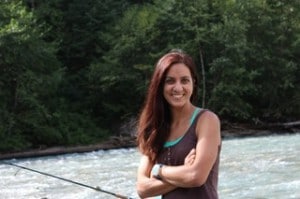In the cold, purple fingers are better than white ones. The colour of the skin indicates that there is something moving in the capillary veins – some circulation – some flow of blood. There is hope that my fingers will be warm again.
White fingers tell a different story. White fingers are stiff, frozen and sort of deadlike. I lose sensation. I lose dexterity. They are numb. They hurt.
A nurse once prepped me for knee surgery and my white fingers were put to the test. She struggled to find the pulse in my index finger. There was no pulse. She adjusted the small clip over my finger that was attached to the heart monitor machine. There was no reading. She checked the cords, the plugs, the electrical outlet, the digital screen. She asked another nurse for assistance. Still nothing. I told her that I had Raynaud’s syndrome and the cold draft might be too much for my extremities as I lay naked under my blue hospital gown. It can’t be, she said, shaking her head.
It, in fact, was. When the anaesthesia wore off and I awoke from surgery, I found a pulse monitor attached to my ear.
At the TRIUMF nuclear physics open house one early winter, one of the interactive displays on site looked at thermal imaging. Participants had to stand in front of a thermographic camera so that they could see how heat was distributed through their bodies. Colours red and yellow indicated strong and weak heat sources. I placed my two hands in front of the camera. On the giant screen, my fingers were blue – my palms red and yellow. The two scientists running the experiment jumped from their seats. They looked puzzled. Miss, they said, scratching their heads. Could you put your hands against the camera again? My fingers were blue. Can you move them around for us? they asked. Still blue.
I was a woman with blue and lifeless fingers at the science experiment.
I googled to see if there was a cure to Raynaud’s disease. My rheumatologist assured me after my diagnosis that there wasn’t. But I persevered and found one on the Mayo Clinic website. The cure read: Move to a warm country.
It was a hard cure to swallow. I cry when I see glaciers melting because I love them so much. I ice fish. I ski. I snowshoe. I jump into frigid lakes.
I once stood by myself in the middle of a frozen lake on a small Cree reserve in northern Manitoba when the wind chill reached -52 degrees Celsius. All I could think of in that moment was how lucky I was to be alive, to be standing in solitude watching the Northern Lights dance above; their neon green hues circling like waves in the night sky.
I decide to design cure #2. It reads something like this: Remain in the cold country that you live in and persevere.
I go to Costco and buy boxes of hand and toe warmers. Online, I purchase two pairs of electric gloves, one man-hand sized leather pair with the battery pack attached to the cuff, and one carbon fibre liner pair with the batteries attached to wires hidden in my jacket pockets. On a long ski day, I take both pairs.
I make some strategic changes. I stop cutting frozen chicken. I take wild blueberries out of my freezer with oven mitts. I am quick at the milk aisle at the grocery store. I don’t ask for ice when I order a drink.
In the colder months, I mountain bike uphill with mittens lined with hand warmers. On the downhill, I replace my mittens with gloves – so that I can keep one finger lightly on the hand brakes, just as my instructor once carefully informed me. Mittens with warmers on the up; gloves on the down. Repeat and switch.
I attend hot yoga and marvel at my red fingers pulsing with blood in down-dog. At the swimming pool sauna, I lie down and close my eyes for 30 minutes or longer. At night, I dream about floating in hot springs in Iceland, gazing at glaciers in the distance.
I use talk therapy. I tell my blue, white, purple fingers – I can get you pink and red again. You’ll soon be pulsing – I assure them. The warmth will come – the blood will flow. And when it does, I inform them tenaciously: Just wait and see, you’ll be ice fishing on a frozen lake again, pulling out a big one just in time for supper.

